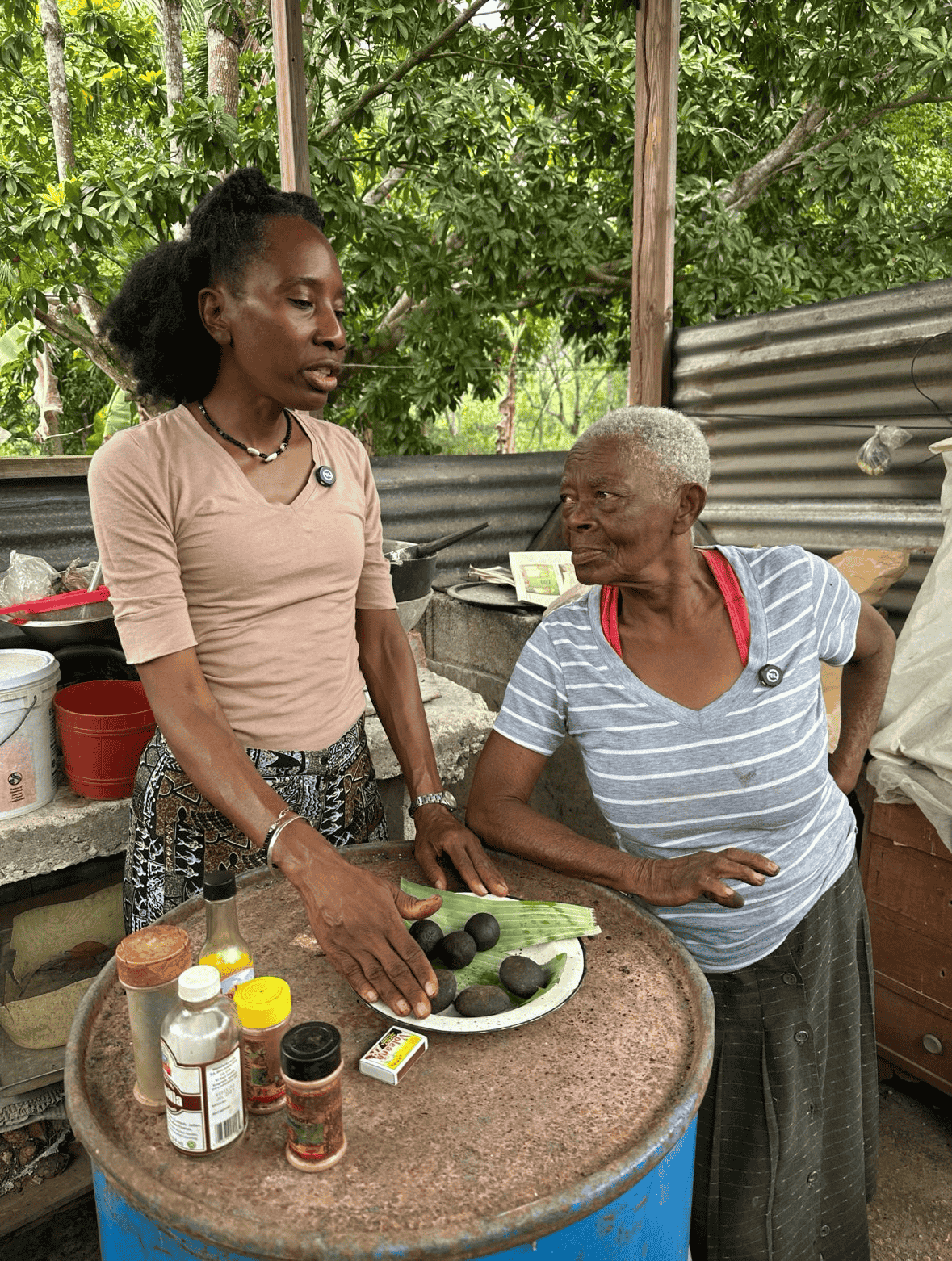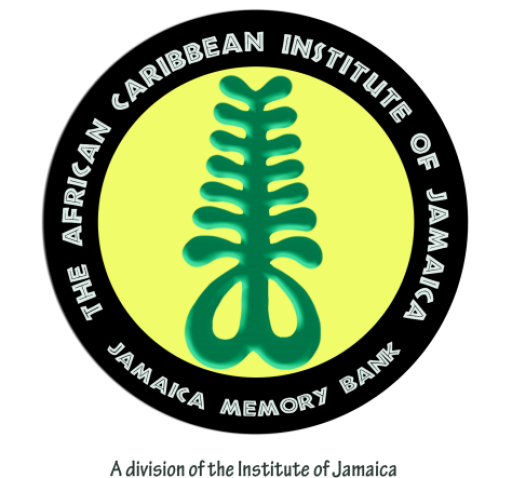By Marsha M. Hall, Research Officer, ACIJ/JMB
To ensure the preservation, sustainability, and knowledge associated with the preparations of traditional culinary practices in Jamaica, the African Caribbean Institute of Jamaica/ Jamaica Memory Bank (ACIJ/JMB) journeyed at the cool hills of Mount Roseau into the idyllic town of Ewarton, located in the parish of St. Catherine o engage in the communal preparations of two traditional culinary delights.
This documentation entailed both handmade and home-made making of Dukunoo -a pastry- like dessert steamed in banana leaves. While the other, chocolate tea or choklit tea in the Jamaican vernacular is prepared by parching Cocoa beans harvested from locally-grown Cacao pods enjoyed and savoured as choklit tea.
Culturally, these food products were once popular staples in the homes of many Jamaicans. Although choklit tea is still featured regularly at the kitchen or dining tables of some food establishments, now-a- days it is almost uncommon to see Dukunoo eaten outside the celebratory months of August-Jamaica’s Emancipation celebrations- and Heritage Month typically recognised annually in October. This technique of cooking maize dough on banana leaves originated from West Africa and owes its presence in Jamaica and other parts of the Caribbean to the forced arrival of enslaved Africans specifically those from Ghana, West Africa where it is called Dokunu, Kenkey or Komi.

The trip to Ewarton was nothing short of adventurous as we traversed into the valley on hot-footed donkeys under glare of the Jamaican sun. With a cool gentle wind fanning our backs the donkeys careened from incoming but slow vehicular and pedestrian traffic. At last, we finally arrived at the home of Mrs. Gloria Stephenson or Mama Gloria as she is affectionately called for our first participation in Dukunoo-making. Her patience, knowledge and sometimes cheerful personality set the tone for what was a pleasant and comforting cooking experience. From cinnamon to coconut, cornmeal one of the main ingredients, nutmeg, sugar and of course the banana leaves with tender but strong bark strips to ensure that once the Dukunoos were made they would be tied and place in a hot pot of boiling water. The kitchen of Mama Gloria was a mélange of savoury aromas and good-witted humour.
arable and fruitful land, more than enough space for an ole’ time Jamaican kitchen and her chickens to roam. Greeting all four of us with open arms and a wide grin, Ms. Lita steady, firm yet gentle hands guided us in the art of Cocoa Bean parching and the end result was a delicious aroma of spice-filled chocolate balls. Eager to sample the culinary fares, the team paired the soft moist Dukunoo with a steaming cup of hot choklit tea.
What a memorable day, it was not only was our palate satisfied, but the documentation highlighted an urgent need to safeguard Jamaica intangible cultural heritage that Jamaica’s indigenous food represents. Food and cultural food in particular has the power to connect communities of people, shaping the oral histories with recipes passed down from one generation to the next. As we continue to reflect Jamaica’s rich cultural diversity through foods and other food-related practices across the geographical landscape, we are reminded that food is community, food is legacy.
How to make Dukunoo:
- Combine unrefined cornmeal, fresh coconut milk, and grated sweet potato a teaspoon of salt, sugar (based on your level of sweetness in-take), a table spoon of cinnamon, and nutmeg.
- Pour coconut milk into a pot and allow to boil, then add the spices and then last the cornmeal
- Stir until there is a smooth dough like consistency for an hour
- Remove the dough, set aside to cool.
Instructions:
• Wash and devein the banana leaves, then cut the each leaf into rectangular shape/ pieces.
• Quail Banana leaves by passing them over an open flame by using a pair of tongs. Allow to cool.
• Fold the leaves to ensure there is no spillage
• Tie the folded leaves with a string of the banana bark and carefully place in a steaming pot of boiling water
• Allow this to cook for an hour then remove.
•Enjoy this yummy treat with friends and family.
Preparing Chocolate balls
- Pick Cacao fruit Husk it and harvest the seeds
- Place the Cocoa Beans/seeda on a clean surface out in the sun to dry (for a week)
- After drying, parch/roast seeds in a pot. “Trash” the seeds (remove kernel as you
would peanuts after roasting. - Pound/beat the seeds in mortar with a mortar stick/pestle until smooth and sticky.
- Add cinnamon & nutmeg and beat/pound to incorporate. (This step is entirely
optional). - Form Cocoa paste into balls by rolling in the palm of your hands.
- Leave the balls out to dry so these can harden.
Chocolate ‘Choklit’ tea
Place a pot of water to boil (optional cinnamon stick) then grate the chocolate into the pot
Milk and sweetener – You can use fresh coconut milk with a small amount of coconut sugar
and sweeten to taste.
Straining the chocolate tea – Strain the chocolate before serving as there can be tiny grits
Sit back, sip slowly, carefully and enjoy.
Documentation team: Marsha Hall, Chelsea Stephenson-Research Officers, and O’Neil
Passley- Audio/Visual Technicina
